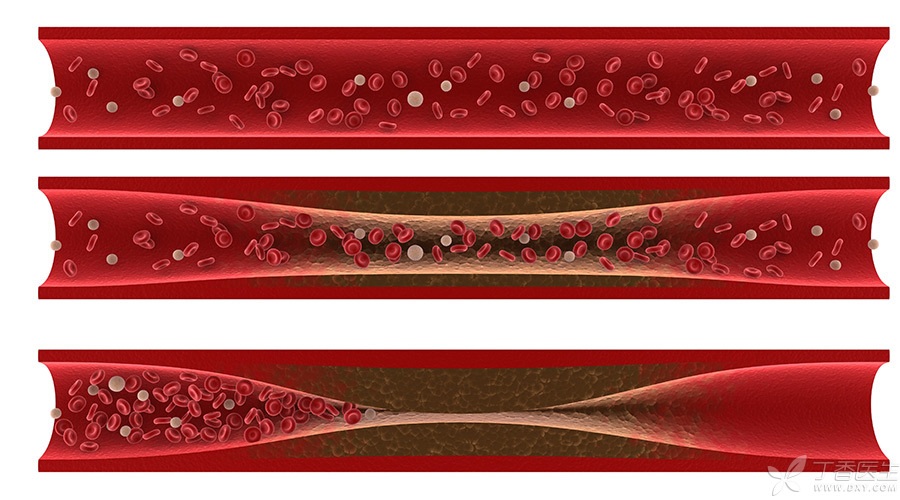
A domestic investigation has found that the prevalence rate of cerebrovascular diseases is 12.6% and that of cardiovascular diseases is 17.1% among type 2 diabetes patients hospitalized in 3A hospitals.
In other words, every 10 diabetics have cerebrovascular problems, while almost every 5 diabetics have cardiovascular problems. These cardiovascular and cerebrovascular problems mainly include coronary heart disease, cerebral infarction, cerebral hemorrhage, etc.
Why is diabetes still associated with cardiovascular and cerebrovascular diseases? Sugar friends have cardiovascular and cerebrovascular diseases, is it serious? Today, Dr. Clove will tell you about diabetes and cardiovascular and cerebrovascular diseases.
Diabetes induces and promotes cardiovascular and cerebrovascular diseases
People with diabetes have a higher incidence rate of cardiovascular and cerebrovascular diseases than ordinary people, and the progress is fast and the disease is serious. This is due to the basis of diabetes formation: hyperglycemia, which can induce and promote cardiovascular and cerebrovascular diseases.
Let’s take the blood vessels in the human body as roads to illustrate.
Under normal circumstances, the blood vessels in people’s bodies are like [two-way eight-lane] main roads, which are very smooth. However, in people with diabetes, due to hyperglycemia, this main road will become a small alley:
- Blood lipid, platelets and other substances are more likely to deposit on the arterial wall, forming plaques and blocking blood vessels. The diastolic function of arteries that normally contract and diastole is also deteriorated due to hyperglycemia.
As a result, the vascular roads in our bodies are getting narrower and narrower, and traffic jams are inevitable. This is the reason for the high incidence of cardiovascular and cerebrovascular diseases among diabetics.

The blood vessels are narrowing and getting into [traffic jam]
What is more dangerous is that if the plaque ruptures, thrombus can further form at the rupture, which will aggravate heart and cerebral ischemia and cause serious cardiovascular and cerebrovascular events, such as myocardial infarction and cerebral infarction.
Hyperglycemia also brings hypertension and hyperlipidemia, coupled with obesity, insulin insensitivity and other factors, to promote the occurrence of cardiovascular and cerebrovascular diseases.
Diabetes Mellitus Complicated with Cardiovascular and Cerebrovascular
Compared with cardiovascular and cerebrovascular patients without diabetes, the manifestations of diabetic patients are atypical or even mild and easy to be ignored.
Take coronary heart disease as an example. This is a blood vessel that supplies blood and oxygen to the heart. The heart disease caused by traffic jam is caused by anterior cramps, chest tightness and shortness of breath in mild cases, and myocardial ischemia and necrosis in severe cases. This is what we often call myocardial infarction, which may lead to death in more serious cases.
When myocardial infarction occurs, it is mainly manifested as persistent severe chest pain. However, sugar friends are not sensitive to pain due to neuropathy of the body, and may not feel pain during myocardial infarction, which will lead to delay of treatment time.
Another example is cerebral infarction caused by ischemic necrosis of brain tissue. The mild cases are only manifested as dizziness and fatigue, which is very similar to the symptoms of hypoglycemia. If sugar lovers mistake this for hypoglycemia, it is also very delayed.
Therefore, for sugar lovers, we should be alert to cardiovascular and cerebrovascular diseases.
In case of the following circumstances, you need to go to the hospital for examination and investigation of cardiovascular and cerebrovascular diseases:
- Chest tightness and shortness of breath; Chest pain; Unexplained abdominal pain, toothache and pharyngeal discomfort.
In one of these cases, cerebrovascular diseases need to be investigated:
- Persistent dizziness, fatigue and even paralysis, blood sugar higher than 3.9 mmol/L; Walking unsteadily, the body has the feeling of turning to one side; Continuous numbness of one limb; Suddenly vomit unclear words; An unexplained headache.

Seven Precautions, [Prevention] First
Cardiovascular and cerebrovascular diseases are extremely harmful, and early prevention can prevent them before they occur. The following seven precautions, whether suffering from cardiovascular and cerebrovascular diseases or not, are an important part of prevention and treatment measures.
Step 1 Control Blood Glucose
Under the guidance of doctors, try to achieve the ideal goal, which varies from patient to patient and condition. The younger the age, the more strict the standard must be.
2. Control diet and exercise
Follow the doctor’s diabetes diet, stop smoking and limit alcohol consumption, and carry out appropriate physical activities at the same time.
Step 3 Control Blood Pressure
For those without hypertension, blood pressure should be measured at each visit, and for those with hypertension, blood pressure should be monitored by themselves every day. When blood pressure ≥ 140/80 mmHg, antihypertensive drug therapy can be started under the guidance of doctors, and the control target is < 140/80 mmHg; Young sugar lovers without complications should control their blood pressure below 130/80 mmHg;
Step 5 Control Blood Lipids
The primary goal of blood lipid control is to control low density lipoprotein cholesterol, which is below 1.8 mmol/L for patients with cardiovascular diseases and below 2.6 mmol/L for patients without cardiovascular and cerebrovascular diseases.
In addition, triglyceride should be controlled below 1.7 mmol/L, while for high density lipoprotein cholesterol, this is beneficial cholesterol, which must be greater than 1.0 mmol/L for men and 1.3 mmol/L for women.
Finally, don’t forget to detect blood lipid at least once a year, and increase the frequency of detection if lipid-regulating drugs are used.
Step 6: Weight Control
The BMI should be 18.5 ~ 23.9 kg/m2, BMI = body weight (kg)/height 2 (m).
7. Control blood uric acid
There is also high blood uric acid, which is also related to diabetes. High blood uric acid also increases the risk of cardiovascular and cerebrovascular diseases.
Sugar lovers with elevated blood uric acid should avoid the intake of animal viscera, alcohol and seafood, and use uric acid lowering drugs when necessary. It is best to control the blood uric acid below 360mol/L, and those with gout should control the blood uric acid below 300mol/L, and review the blood uric acid every three months for observation and adjustment.
8. Prevention of Thrombosis
Under the guidance of doctors, take anti-platelet aggregation drugs such as aspirin and clopidogrel to prevent the occurrence or aggravation of cardiovascular and cerebrovascular diseases.
Dr. Clove should remind everyone that diabetes is a lifelong disease and must be treated for a long time, closely followed up with medical treatment, and adjust the treatment plan according to the examination results at any time. Generally, they can maintain a good condition. If they do not pay attention to it and the treatment and follow-up are irregular, they may pay a heavy price.
